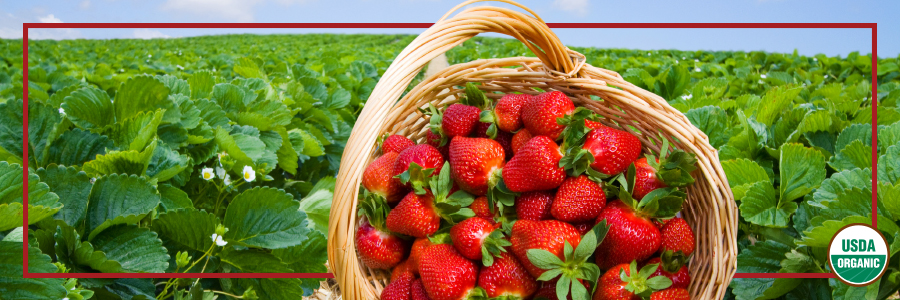


Sign-up for {N}power to get exclusive discounts, newsletters, members-only features, and more!
 Denver - Design District - Alameda and Broadway
Denver - Design District - Alameda and Broadway
368 S Broadway
Denver, CO 80209
United States
 Preferred Store:
Select a Store
Preferred Store:
Select a Store

“Let me take you down, cause I’m going to, strawberry fields”
– The Beatles, 1967
Imagine a field wide and lush, dotted with dazzling crimson berries under golden sunlight on a perfect late spring day. Smell the sweet fragrance of berries on the breeze. Picture a carefully curated picnic with organic cheeses and crackers, perhaps some rich, dark chocolate that pairs brilliantly with the best part of the picnic—fresh, organic strawberries. These juicy berries are bursting with a sweet team of nutrients that support your heart, mind, and body. Why just imagine it? Pack your basket and enjoy the beautiful day!

It’s funny how sometimes foods are shaped like the organs they benefit—like walnuts to the brain, strawberries are wonderful for the heart. The brilliant red of strawberries can be attributed to their rich anthocyanin content. Anthocyanins are a class of antioxidants that bring a host of health benefits, including supporting healthy vasodilation, which supports healthy blood pressure; fighting free radicals that can lead to cellular damage; and reducing the overall risk of cardiovascular disease.1 2 3 4 In addition to heart-loving anthocyanins, strawberries also boast neuroprotective phytochemicals that research has shown support cognitive function. But the benefits don’t stop there—strawberries contain more vitamin C than oranges and are packed with folate, a B vitamin essential for tissue growth and cell function.5
 Strawberries have taken the number one spot on the Environmental Working Group’s Dirty Dozen list since 2016.6 USDA tests found 99 percent of conventionally grown strawberries contained residue of at least one pesticide, with more than 81 different pesticides found in total. About 20 percent of the sprays used leave residues on the berries, while the remaining 80 percent are fumigants sprayed on the soil where the strawberries are grown. One of the fumigants used in conventional strawberry farming is chloropicrin, an ingredient in tear gas.7 Fumigants can be carried by the wind, putting neighboring homes and schools at risk, and wipeout beneficial microorganisms, bacteria, and mycorrhizal fungi that are critical components of healthy soil.
Strawberries have taken the number one spot on the Environmental Working Group’s Dirty Dozen list since 2016.6 USDA tests found 99 percent of conventionally grown strawberries contained residue of at least one pesticide, with more than 81 different pesticides found in total. About 20 percent of the sprays used leave residues on the berries, while the remaining 80 percent are fumigants sprayed on the soil where the strawberries are grown. One of the fumigants used in conventional strawberry farming is chloropicrin, an ingredient in tear gas.7 Fumigants can be carried by the wind, putting neighboring homes and schools at risk, and wipeout beneficial microorganisms, bacteria, and mycorrhizal fungi that are critical components of healthy soil.
Healthy soil is teeming with life. Lively ecosystems of microscopic organisms fill soil with rich nutrients that support the growth of healthy produce. Studies have shown that organic farming practices lead to healthy soil that in turn grows fruits and veggies that are more nutrient dense. Organic strawberries contain higher levels of nutrients including polyphenols, vitamin C, and even have a longer shelf life compared to conventionally grown strawberries.8 Choosing organic strawberries means healthier soil, safer communities, and more nutritious (and delicious!) berries—what better addition to the perfect picnic?



Sign-up for {N}power to get exclusive discounts, newsletters, members-only features, and more!

